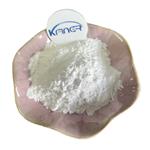Uses of Coumarin
Jan 12,2022
Coumarin is a naturally occurring Benzopyrone compound. It is found in a large number of plants belonging to many different families including tonka beans, woodruff, lavender oil, cassia, melilot (sweet clover), and other plants. It is found in edible plants such as strawberries, cinnamon, peppermint, green tea, carrots, and celery, as well as in partially fermented tea, red wine, beer, and other foodstuffs. Concentrations range from 87 000 ppm in cassia and 40 000 ppm in cinnamon to 20 ppm in peppermint and 5 ppb in tangerines.

Uses
Coumarin is most often used as a fragrance ingredient, where it functions as a fragrance, as a fragrance enhancer, and as a stabilizer. Coumarin is widely used in perfumes, hand soaps, detergents, and lotions at concentrations from 0.01 to 2.4%. It is used to give pleasant aromas to household products or to mask unpleasant odors. The conservative estimate for systemic exposure of humans by using cosmetic products is 0.13 mg kg-1 day-1, disregarding any corrections that should be made for absorption that is <100%. Coumarin is used as a pharmaceutical for the treatment of high-protein lymphedema and for improved venous circulation, and has been tested in clinical trials as an antineoplastic. Although coumarin’s use in foods is allowed via naturals such as cinnamon, at the present time, coumarin is not permitted for use as a direct food additive; however, it is used as a tobacco flavor. Coumarin is also used in the electroplating industry.
Environmental Fate
Coumarin is readily biodegradable. Coumarin is unlikely to bind to soil. Coumarin does not bioaccumulate; the bioconcentration factor has been determined to be <10–40. Various environmental fate studies have shown that coumarin in the environment would biodegrade and be lost to volatilization. Losses resulting from photolysis may also occur.
Toxicity
Coumarin toxicity is a function of blood and target tissue levels of coumarin relative to the metabolic capacity of the target organ. Cellular toxicity results when the formation of the toxic moieties exceeds the capacity of the cell to detoxify. This can have significant impact when comparing dosing by gavage to dietary exposure.
- Related articles
- Related Qustion
- Coumarin Metabolism, Toxicity and Carcinogenicity Nov 18, 2019
Coumarin is a natural product which exhibits marked species di?erences in both metabolism and toxicity. The majority of tests for mutagenic and genotoxic potential suggest that coumarin is not a genotoxic agent. The target organs for toxici
- Coumarins — An Important Class of Phytochemicals Nov 18, 2019
Among them, coumarins are a family of benzopyrones (1,2-benzopyrones or 2H-1-benzopyran-2-ones) widely distributed in the nature. They represent an important family of naturally occurring and/or synthetic oxygen-containing heterocycles, bea
Cotinine is the major metabolite of nicotine. In the liver, nicotine is rapidly metabolized to cotinine (70–80%) by CYP2A6 and to nornicotine (5%) by CYP2A6 and CYP2B6. With a half-life about 10-fold longer than that of nicotine (15–19 h fo....
Jan 12,2022Biochemical EngineeringProfessions that involve dealing with the combustion of coal or wood may be exposed to higher levels of cresols than the general population. Environmental tobacco smoke is also a source of cresol exposure. Average cresol concentration may v....
Jan 12,2022Organic ChemistryCoumarin
91-64-5You may like
- Is dimethyl disulfide a natural product?
May 22, 2024
- What is the effect of water on 3-aminopropyltriethoxysilane (APTES)?
May 17, 2024
- The solubility of Succinic anhydride
May 11, 2024







